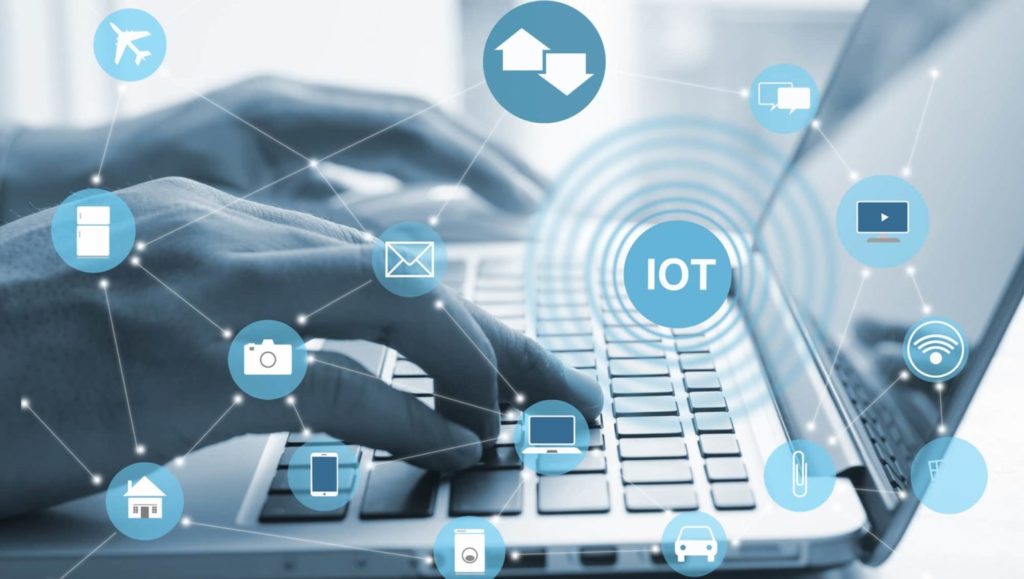
The Internet of things (IoT) is a system of interrelated computing devices, mechanical and digital machines provided with unique identifiers (UIDs) and the ability to transfer data over a network without requiring human-to-human or human-to-computer interaction.
The definition of the Internet of things has evolved due to the convergence of multiple technologies, real-time analytics, machine learning, commodity sensors, and embedded systems.[1] Traditional fields of embedded systems, wireless sensor networks, control systems, automation (including home and building automation), and others all contribute to enabling the Internet of things. In the consumer market, IoT technology is most synonymous with products pertaining to the concept of the “smart home“, including devices and appliances (such as lighting fixtures, thermostats, home security systems and cameras, and other home appliances) that support one or more common ecosystems, and can be controlled via devices associated with that ecosystem, such as smartphones and smart speakers.
There are a number of serious concerns about dangers in the growth of IoT, especially in the areas of privacy and security, and consequently industry and governmental moves to address these concerns have begun.
The main concept of a network of smart devices was discussed as early as 1982, with a modified Coca-Colavending machine at Carnegie Mellon University becoming the first Internet-connected appliance,able to report its inventory and whether newly loaded drinks were cold or not.Mark Weiser‘s 1991 paper on ubiquitous computing, “The Computer of the 21st Century”, as well as academic venues such as UbiComp and PerCom produced the contemporary vision of the IoT. In 1994, Reza Raji described the concept in IEEE Spectrum as “[moving] small packets of data to a large set of nodes, so as to integrate and automate everything from home appliances to entire factories”.Between 1993 and 1997, several companies proposed solutions like Microsoft‘s at Work or Novell‘s NEST. The field gained momentum when Bill Joy envisioned device-to-device communication as a part of his “Six Webs” framework, presented at the World Economic Forum at Davos in 1999.

Consumer applications
A growing portion of IoT devices are created for consumer use, including connected vehicles, home automation, wearable technology, connected health, and appliances with remote monitoring capabilities.
Smart home
IoT devices are a part of the larger concept of home automation, which can include lighting, heating and air conditioning, media and security systems.[26][27] Long-term benefits could include energy savings by automatically ensuring lights and electronics are turned off.
A smart home or automated home could be based on a platform or hubs that control smart devices and appliances. For instance, using Apple‘s HomeKit, manufacturers can have their home products and accessories controlled by an application in iOS devices such as the iPhone and the Apple Watch. This could be a dedicated app or iOS native applications such as Siri. This can be demonstrated in the case of Lenovo’s Smart Home Essentials, which is a line of smart home devices that are controlled through Apple’s Home app or Siri without the need for a Wi-Fi bridge.[31] There are also dedicated smart home hubs that are offered as standalone platforms to connect different smart home products and these include the Amazon Echo, Google Home, Apple’s HomePod, and Samsung’s SmartThings Hub. In addition to the commercial systems, there are many non-proprietary, open source ecosystems; including Home Assistant, OpenHAB and Domoticz.
